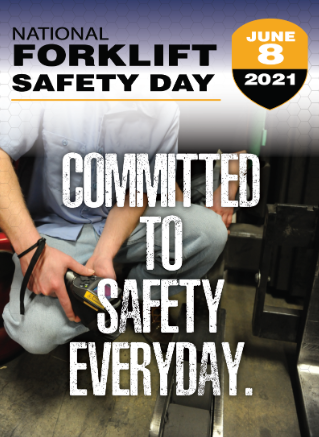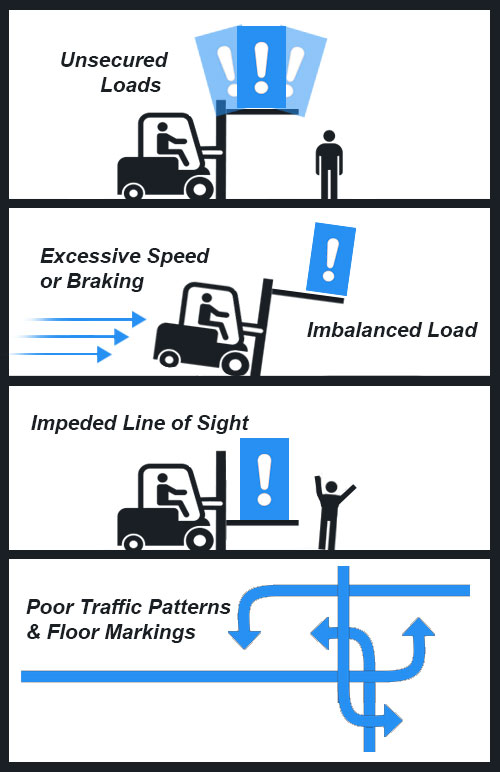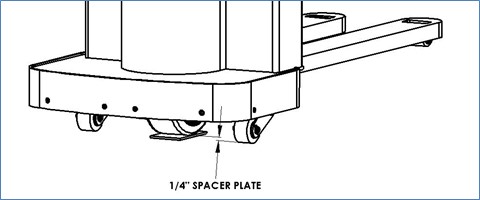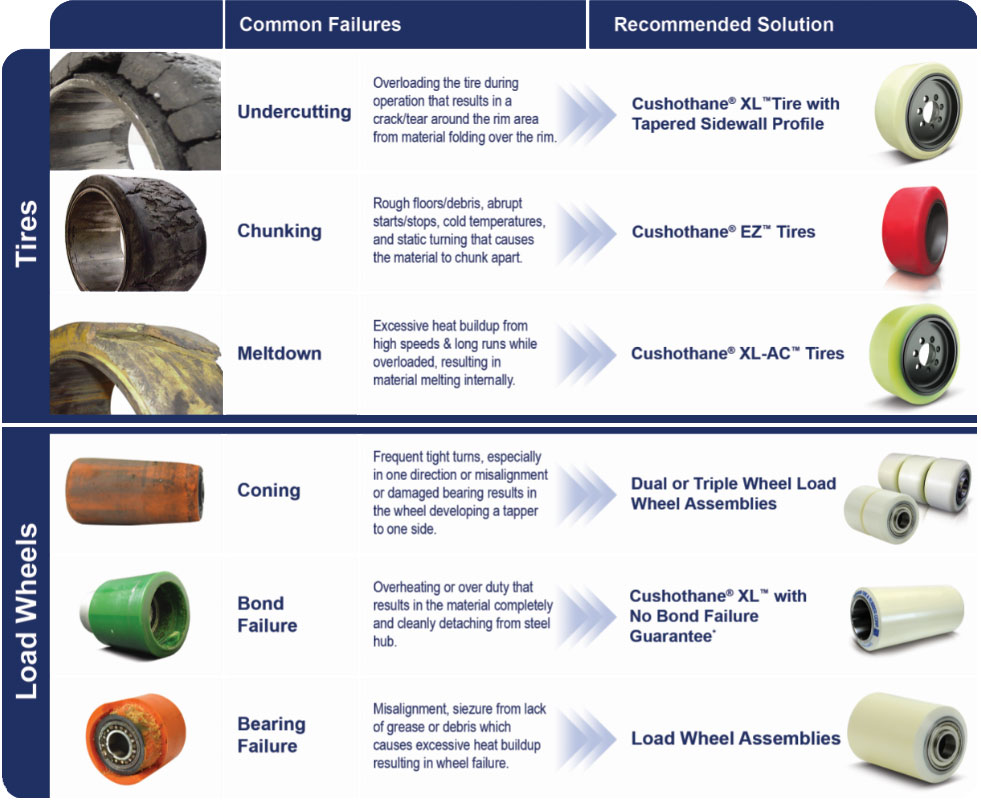
Articles
Committed to Safety, Everyday.
Why We Bring Awareness to Forklift Safety
At Superior Tire & Rubber Corp. safety is our #1 priority. The Superior Safety Culture is evident at all our facilities, including manufacturing, tooling, and distribution centers. We adhere to, and enforce, the guidelines set forth by OSHA which details everything from certifying forklift operators through training, equipment maintenance, visual/audible signaling and utilizing daily forklift checklists prior to operation. Safety data from our operations are recorded and reported daily in a dashboard format to keep safety awareness in the foremind of every Superior teammate.
However, operating equipment is still a potentially dangerous job that results in thousands of incidents per year. One of the primary reasons that lead to fork truck injuries is a term called “slacking” – taking the eye off the ball with respect to safety measures over time. The longer an operator uses the equipment, and the more relaxed pedestrians get around equipment the more likely they are to start cutting corners. Skipping a daily inspection because they "did it yesterday" or assuming the operator "had to have seen you" in his path. It is very easy to overlook something simple that can jeopardize the lives and wellbeing of operators and employees. No matter how low you think the risk of injury is; you should never “slack” on the culture of safety.
Establishing a Culture of Safety:
- Is not a difficult task
- Does not take up a tremendous number of resources.
- Most importantly, it prevents injuries and saves lives!
June 8th, 2021 is National Forklift Safety Day - a day that helps remind operators and pedestrians that the odds of an accident happening to them are not that low. It reminds us to understand the importance of these safety measures, what they are and why they exist.

5 General Rules for Forklift Safety
There are many dangers surrounding forklift operation and maintenance - a coveat to the tremendous benefits they bring to the material handling world. Below are 5 simple rules for how forklift equipment should be used in the workplace as well as common hazards and OSHA's take on proper forklift training.
1. Know the Statistics:
- Over 1,000,000 forklifts in operation in the United States
- Forklift-related citations rank in the Top 10 of OSHA violations each year
- More than 8,000 non-fatal forklift related injuries involving days away from work
- Roughly 1% of all forklift related injuries are fatal
- With proper training & awarness, roughly 70% of all forklift related accidents could be avoided
2. Know the Classes of Forklift Equipment
• Class I - Electric Motor Rider Trucks
- Rider-type counterbalance, Sit-down forklifts, and 3 wheel electric trucks
• Class II - Electric Motor Hand Trucks and/or End Rider Pallet Trucks
- Low-lift pallet trucks and high-lift straddle trucks
• Class III - Electric Motor Narrow Aisle Trucks
- Platform side loaders and high-lift straddle trucks
• Class IV -Internal Combustion Engine Trucks with Solid/Cushion tires
- Indoor counterbalance trucks
• Class V - Internal Combustion Engine Trucks with Pneumatic tires
- Outdoor counterbalance trucks
• Class VI - Electric & Internal Combustion Engine Tractors
- Sit-down rider trucks
• Class VII - Rough Terrain Forklift Trucks
- Vertical mast type trucks, variable reach type trucks, and truck trailer mounted
3. Know Common Hazards

4. Know the Requirements
Prior to any operation of forklift equipment, proper training is required in accordance with OSHA standard 29 CFR §1910.178. To read the full regulations, please vist the OSHA webpage on Powered Industrial Truck safety located here:
https://www.osha.gov/laws-regs/regulations/standardnumber/1910/1910.178
5. Pre-Operation Checklist
Just as a pilot performs a pre-flight checklist, the same applies to operating a forklift. Below are a handful of steps to perform before getting behind the wheel:

Safety Through Forklift Maintenance
When possible - always refer to your equipment's owner's manual. Major equipment manufacturers spend an unimaginable amount of time & resources writing these manuals to make sure operators and bystandards are out of harm's way. They also make sure you're getting the best performance out of your equipment through routine maintenance.
As a manufacturer of tires, wheels and casters for this equipment, Superior Tire & Rubber Corp. has a responsibility to help bring awareness to the maintenance protocals that directly involve the products we make. Below are few references to properly inspecting the tires, wheels and casters on your equipment.
Caster Adjustment for Class 3 Pallet Trucks
Stabilizer casters provide the best support when installed with a pre-load applied to the caster. The pre-load ensures the caster stays in contact with the floor and responds quickly when the truck makes turns eliminating any “free fall” or unstable rocking feeling. As the drive tire wears the casters will carry more of the truck load and drive tire traction will decrease. The caster height will need to be adjusted shorter to restore proper drive tire traction. If the casters are adjusted so they are under little or no pre-load the drive tire will carry more of the truck weight and require more force to turn the steering mechanism.
Adjustment Instructions
On most industrial casters, the proper technique of adjusting the pre-load deflection is done by driving the drive tire on top of a ¼” spacer plate (as shown below in Figure 1). The spacer plate can be made of wood, steel or any other material capable of withstanding the weight of the truck without deflecting. The caster could then be adjusted so that the caster’s load wheel just contacts the floor. Not all casters are created equal and adjustment procedures may differ. When in doubt, contact the caster manufactuer.

Tire and Load Wheel Inspection
In a perfect world, tires and wheels would wear evenly or not at all. In the real world, tires & wheels wear in dozens of different ways. Without visually inspecting and tracking the wear of your tires and wheels, you could be jeopordizing the equipment's performance or worse - the safety. Below are a few of the most common wear and failure modes you need to be aware of and address as soon as they are spotted.

Where Can I Find More Information About Forklift Safety?
Established in the United States in 2013 by the Industrial Truck Association (ITA), National Forklift Safety Day is a global initiative aimed at raising awareness of the safe use of forklifts and the importance of proper operator training. For the most resources on Forklift Safety, we recommend visting their website and registering for the event to be held virtually on June 8th, 2021
